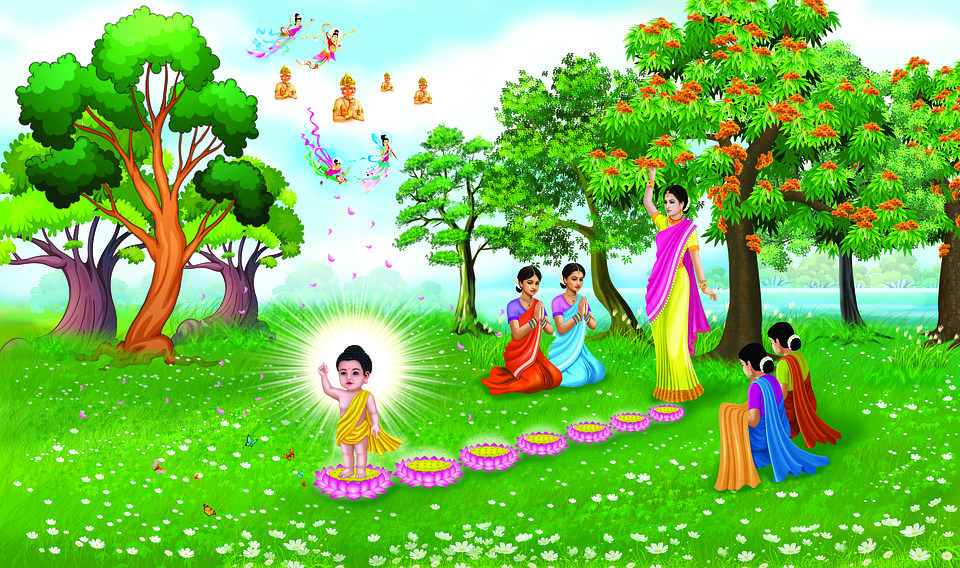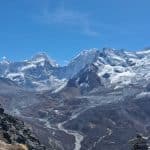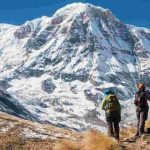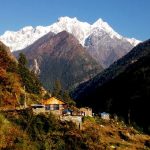Lumbini

Lumbini (The Birthplace of Gautam Buddha)
Lumbini is the birthplace of Gautam Buddha where the apostle of peace, compassion, non-violence and universal brotherhood was born in 624 B.C. It is the most sacred place of Buddhism and lies in the Terai about 250 km south west of Kathmandu, the capital city of Nepal. It is located near Bhairahawa domestic airport. Lumbini remained neglected for centuries. Further exploration and excavation of the surroundings area revealed the existence of a brick and sandstone sculpture within the temple itself, which depict the scenes of Buddha? birth.
Very recently, several Buddhist countries have built several beautiful shrines in Lumbini. An international committee has also been set up for the development of this sacred historical place. The visit to Lumbini, the birthplace of Buddha, the realm of the Shakya is not only for spiritual enlightenment but also for solace and satisfaction that one normally gets in a calm and peaceful place like it.
Place to Visit in Lumbini
Kapilvastu
About twenty-five hundred and some years ago, Kapilvastu was a small republic situated beneath the Churia or Shiwalik range of the foothills of the Himalayas. At the time of the birth of Buddha, Suddhodana the father of Buddha was ruling in Kapilvastu as its chief or king. The first description of Kapilvastu is by the Chinese historian and pilgrim, Fa-hien who visited Lumbini and Kapilvastu in 403. A.D. When he reached the site, the city was marked by desolate ruins and mounds. A few monks and common people lived there. Excavation of Kapilvastu and the surroundings was started from 1899 and Kapilvastu was located in 1901. Proper excavations were conducted in 1967 and onward by the department of archaeology, His Majesty? Government (HMG). At this site the structural remains the palace of the king Suddhodana and several stupas were found. More important details are yet to be revealed after further excavations.
Kapilvastu is an important native place of Buddha where he spent his first 29 years of life. Kapilvastu is associated with several incidents of his life such as: meeting the sick person, meditation of Saint Asit, competition with Shakya youth, shooting of an arrow to cause the spring of water to gush out and so on. When Buddha got enlightenment in Bodhgaya at this place 500 Shakyas and 8 princes adopted Buddhism. At this place he preached his father and Son Rahul also.
Sacred Garden:
Which is spread over 8 sq.km possesses all the treasures of the historic area. It has been listed by UNESCO as a World Heritage site. This is the place where Lord Buddha was born. The site is marked by Ashoka Stone Pillar which has an engraved inscription identifying the spot as the birth place of LORD BUDDHA. On one side of the pillar is the MAYADEVI TEMPLE the temple of the mother of Lord Buddha. Recent excavations have turned up a stone bearing Foot Prints of Lord Buddha.
The Puskerni Pond:
Located south of the Ashokan Pillar is the pond where Queen Mayadevi the mother of Lord Buddha is believed to have taken a bath before giving birth to LORD BUDDHA. Many countries have built TEMPLES , MONASTERIES OR STUPA in Sacred Garden in the international Monastery Zone and there has been global initiative to promote the place Lumbini.
Chinese Monastery: is a complex of Pagodas, & prayer rooms built by Buddhist Association of CHINA.
Korean Monastery: Contains beautiful images of Lord Buddha.
Royal Thai Monastery, The Royal Thai Monastery is located in the vicinity of the birthplace of the Buddha at the Lumbini Sacred Garden, Lumbini, Nepal. The construction has been funded by the Royal Thai Government and the devoted Thai Buddhists followers. The project was initiated to honour the celebration of commemorating the 50th Anniversary of His Majesty King Bhumibol Adulyadej’s accession to the Throne.
Ashoka Pillar:
The pillar carrying an inscription identifying the holy site as the birthplace, is situated nearby the Sacred Garden. To one side of Ashoka pillar is the Mayadevi Temple . Recent excavations have turned up a stone bearing a “foot imprint”, indicating the exact place of birth.
The Lumbini Museum:
located in the Cultural Zone, contains Mauryan and Kushana coins, religious manuscripts, terra-cotta fragments, and stone and metal sculptures. It also possesses an extensive collection of stamps from various countries depicting Lumbini and the Buddha.
Lumbini International Research Institude : located opposite to the Lumbini Museum , LIRI provides research facilities for the study of Buddhism and religion in general. Run jointly by the Lumbini Development Trust (LDT) and the Reiyukai of Japan, LIRI contains numerous books on religion, philosophy, art and architecture.
Myanmar Monastery:
The Myanmar Temple (Lokamani Cula Pagoda) is a gleaming gold and white structure gracefully soaring into the sky in the style of the Shwe-dagon Pagoda in Yangon . There is a monastery complex behind the temple. Nearby, the International Gautami Nuns Temple is a fine replica of the Swayambhu stupa in Kathm-andu. There is a pond here known as Paleswan Pukhu.
Peace Stupa:
The Japan Peace Stupa is situated at the northern end of Lumbini. Built by the Nippon Jon Myohoji of Japan, the 41-m tall edifice is visible from a distance. Four different Buddha statues are set into the stupa’s dome to face the four cardinal directions. Sri Lanka , Vietnam , Thailand and Mongolia are also building temples in Lumbini.
Tilaurakot
Tilaurakot, 27 km to the west of Lumbini, contains the ruins of ancient Kapilvastu, capital of the Sakya kingdom where the Buddha spent his youth as Prince Siddhartha. At Niglihawa (8 km from Tilaurakot) and Gotihawa (5 km), there are broken Ashoka pillars and other relics. Devdaha, capital of the Koliya kingdom and maternal home of Mayadevi, lies 35 km to the northeast of Lumbini – just off the Butwal-Narayanghat section of the East-West Highway.
Our Top Offer
Why booking with us ?
- Fully Locally Owned Company
- Quality Of Service and Competitive price
- Highly Professional Staff
- Flexible and customization trip itinerary
- 100% Customer satisfaction
Need help?
Nepal: 00977-9841273869 whatsapp: 00977-984127386924 hour customer service




